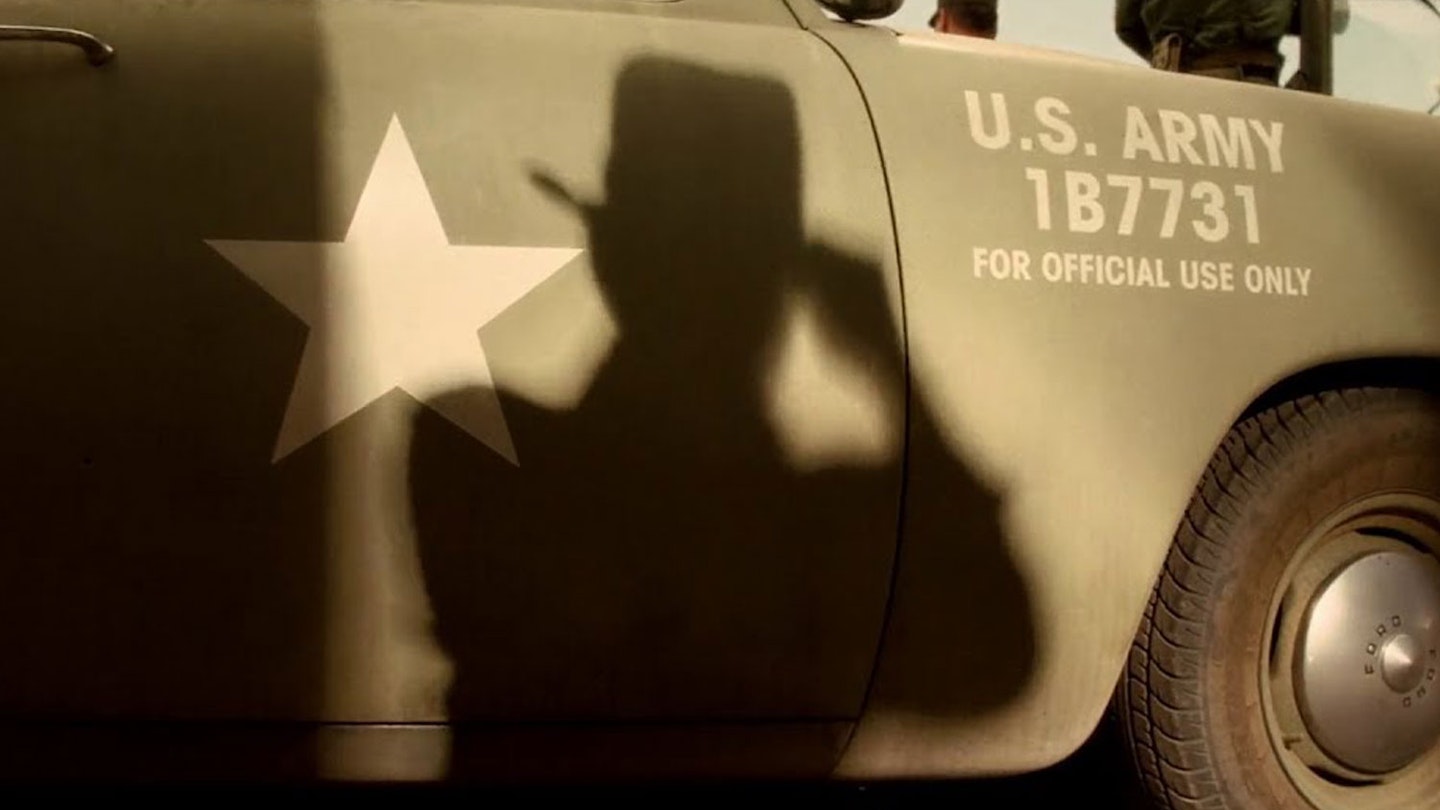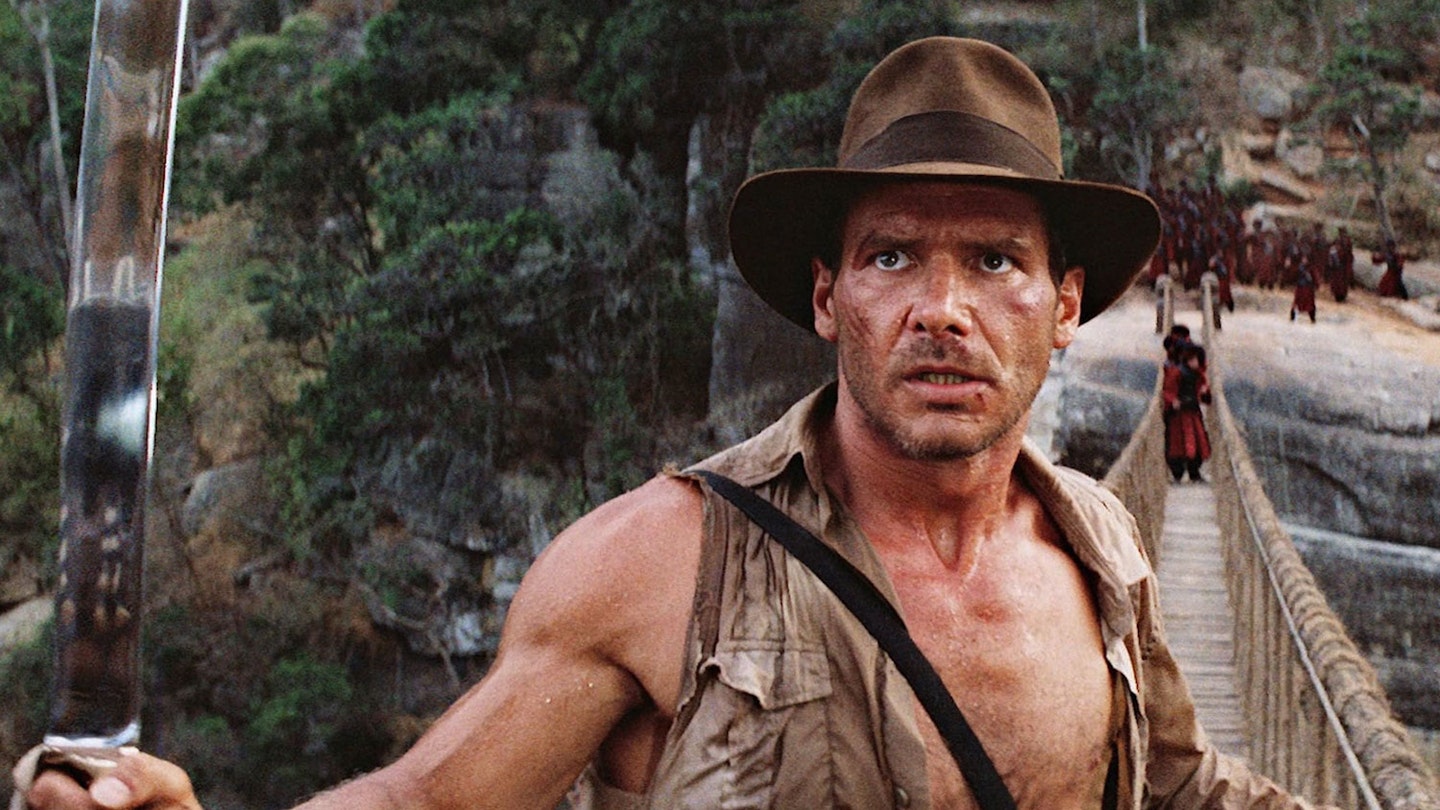Right from its opening match cut, Raiders Of The Lost Ark is quintessential Steven Spielberg. As the Paramount logo gives way to a South American mountain top and the opening credits roll, so begin two hours of pure Spielbergian adventure – a rollicking ride stuffed with practical set-pieces, shot with classical clarity and led by a whip-cracking American hero introduced, with typical Spielberg flair, silhouette-first. Fresh from inventing the blockbuster in 1975 with Jaws, the director reinvented it again six years later with Indiana Jones – an icon born on the big screen rather than ripped from the page, dreamed up by Spielberg and George Lucas from the 1950s serials of their childhoods, operating in a heightened playground of ancient relics, religious wrath, and bounteous snakes (why’d it have to be snakes?). From Raiders, through Temple Of Doom and The Last Crusade, and even into Kingdom Of The Crystal Skull, the director’s DNA is integral to everything that makes Indiana Jones Indiana Jones.
Which makes the recent reports that the long-gestating Indiana Jones 5 is still moving ahead, but without the man, the myth, the beard himself behind the camera, all the more surprising. Instead, it’s mooted that filmmaker James Mangold – of Walk The Line, Logan, Le Mans ’66 and more – will take over as director. While there’s no official announcement from Lucasfilm yet, it poses the question: what is Indiana Jones without Steven Spielberg?
The very image of Indiana Jones himself is inherently Spielbergian. Even Kingdom Of The Crystal Skull is full of Spielberg grace-notes.
It’s fair to ask – after all, Indy has only ever existed on the big screen through Spielberg’s lens. Where even the original Star Wars trilogy saw new directors step in for each entry (albeit all heavily overseen by Lucas), Indiana Jones was always a collaboration between three top men: Spielberg, Lucas on story duties, and Harrison Ford in the fedora. The very image of Indiana Jones himself – whether he’s stepping out of the smokey shadows at the start of Raiders, threatening to chop down the rope bridge in Temple Of Doom as the camera slowly pulls in, or riding off into an infinite sunset at the close of The Last Crusade – is inherently Spielbergian. Even Kingdom Of The Crystal Skull, for all its considerable flaws, is full of Spielberg grace-notes – take the moment our hero is reunited with his fedora (depicted, of course, in silhouette), or dashes through a suburban family house that’s actually a nuclear testing site. As for the small-screen Young Indiana Jones Chronicles, there’s a reason it’s oft-forgotten, a quasi-educational mixed bag that inevitably couldn’t compete with the films’ visual prowess.
Spielberg stepping away throws the need for a fifth Indy film at all back into question. While there are issues to contend with – the increasing age of Ford who, despite an impressive reprisal of Han Solo in Star Wars: The Force Awakens, would have more physical work to do here, and narrative corners to be reversed out of, like Shia LaBeouf’s much-unloved son-of-Indy, Mutt – there’s merit to the idea of Spielberg, Lucas and Ford reuniting to deliver the grand send-off that Crystal Skull sadly wasn’t. But the notion of getting the band back together isn’t the same without your lead guitarist – like a Fleetwood Mac tour without Lindsey Buckingham, it just doesn’t feel right.

Of course, in a world where Indiana Jones 5 will likely exist with or without Spielberg, Mangold is a fine pick – a talented contemporary filmmaker with old-school sensibilities. Like Spielberg he’s a classical director, someone who could be relied upon to keep it practical and avoid green-screen whizz-bangery (which even Spielberg succumbed to on Kingdom Skull). As 3:10 To Yuma, Knight And Day, and Identity proved, he’s unafraid of genre. And with Logan, he showed a knack for delivering moving, action-packed send-offs for ageing movie heroes. If Raiders was Spielberg and Lucas paying homage to their youth, Indiana Jones was surely a big part of Mangold’s. He was 18 when Raiders came out – perhaps it would be fitting for someone who grew up with Indy to deliver a loving farewell.
But it also conjures more complications – how could Mangold, or any other filmmaker, hope to move Indiana Jones forward as an incoming director? Is it possible to make it your own, without straying too far from the template, or slipping into a Spielberg impersonation? It’s a task fraught with as many boobytraps as a long-lost ancient tomb.
As the initial shock of a potentially Spielberg-free Indiana Jones movie subsides, it’s easier to think of the positives – beyond Mangold’s considerable talent, the recent revival of Star Wars was for the most part, internet rage aside, a joyful rekindling of the original trilogy’s magic. If Mangold can pull it off and give us an Indy 5 to cherish as much as the first three Indiana Jones films, the ultimate prize awaits: fortune and glory, kid. Fortune and glory.
